Experiments on the iRU Brava-4215COMBO laptop released in 2004 (Part 2)
In the comments to the previous article, fozzya wrote that iRU Brava-4215COMBO is actually an OEM build of AOpen 96NKU01G02. There is a proud inscription “Made in Russia” on iRU. I don’t know how much in reality these laptops were assembled in Russia, perhaps assembly from prefabricated units was taking place, or maybe the nameplates just stuck. Nevertheless, the product for iron came out very suitable.
In the first part, I told about the laptop itself and its small modifications, now it’s time to see which operating systems this laptop can pull.
We have time for experiments!
Now the Linux world is much closer to me, so I'll start with it.
The first distribution that allowed me to completely stop using Windows tools for work was Ubuntu 9.04. I decided to put it. Despite the fact that Ubuntu 9.04 was placed on the iron five years ago, everything is fine and quickly established.
')
The authorization screen is pleased with its brevity and simplicity:
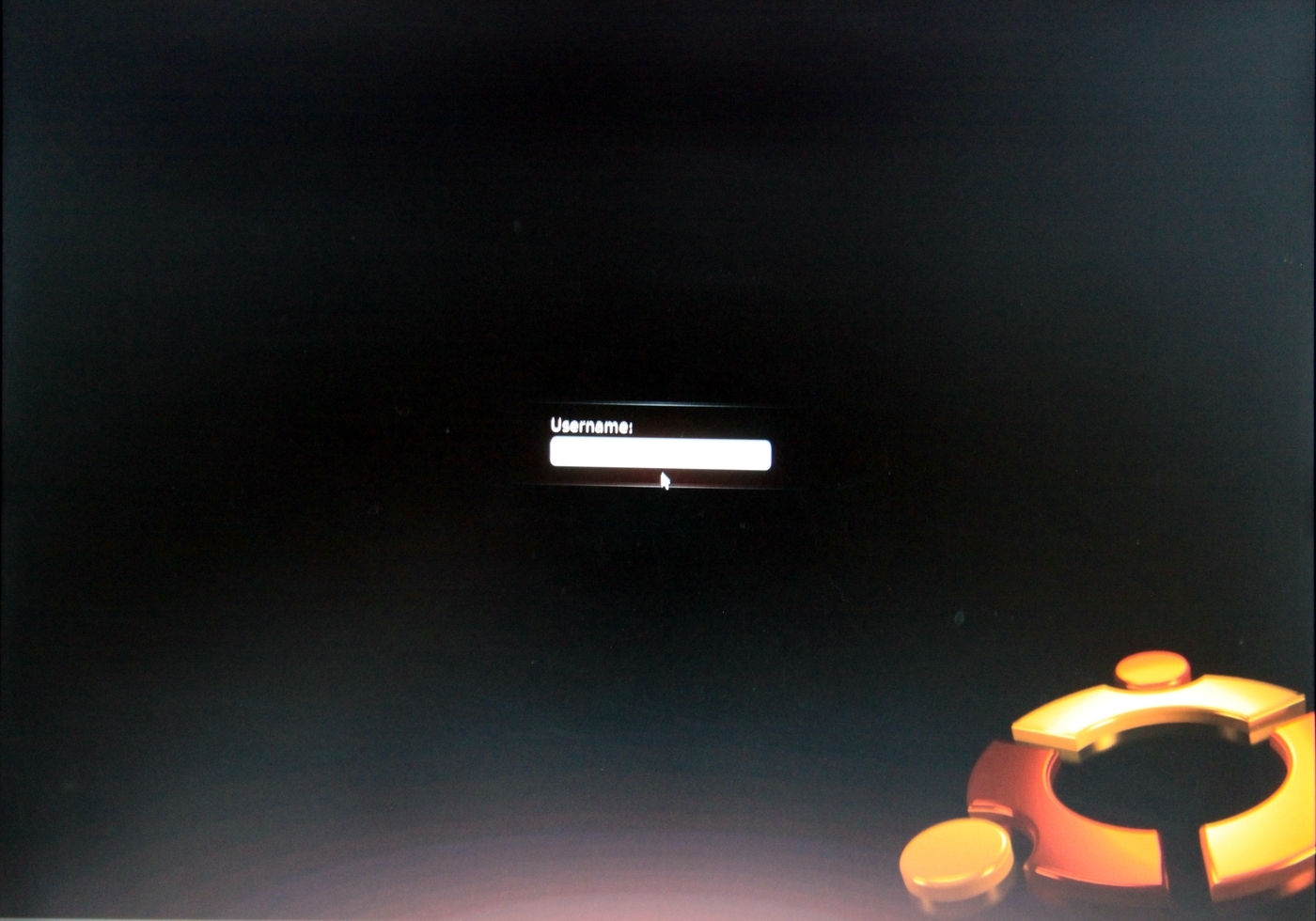
I think it is worth recalling that with time, old hardware gets worse and worse in Windows, and in Linux, on the contrary, new hardware does not always work as it should (and sometimes it doesn’t work out of the box at all), and over time the situation with the drivers and Support for legacy (moderately) devices is getting better.
All the iron worked out of the box, PCMCIA, USB and Wi-Fi, sound, video, nothing to complain about. The only interesting thing is that Wi-Fi does not see access points, in the name of which there are punctuation marks, for example, dots or spaces. I had to connect to the network with a wire. No problems, stuck and got all the settings via DHCP.
Of course, by today's standards, Ubuntu 9.04 is still a dinosaur piece and I would like to update it if possible and be able to install applications. For obvious reasons, the repository has long been unsupported and not updated, but it exists, although it is somewhat hidden. You can get a live repository by changing all entries in ru.archive.ubuntu.com to old-releases.ubuntu.com in the /etc/apt/sources.list file, and you just need to delete the section containing security.ubuntu.com .
The design of Ubuntu 9.04 is minimalistic, everything is simple, clear and in its place, and most importantly, the interaction with the system is damn convenient!
After updating the system, you can put some software:
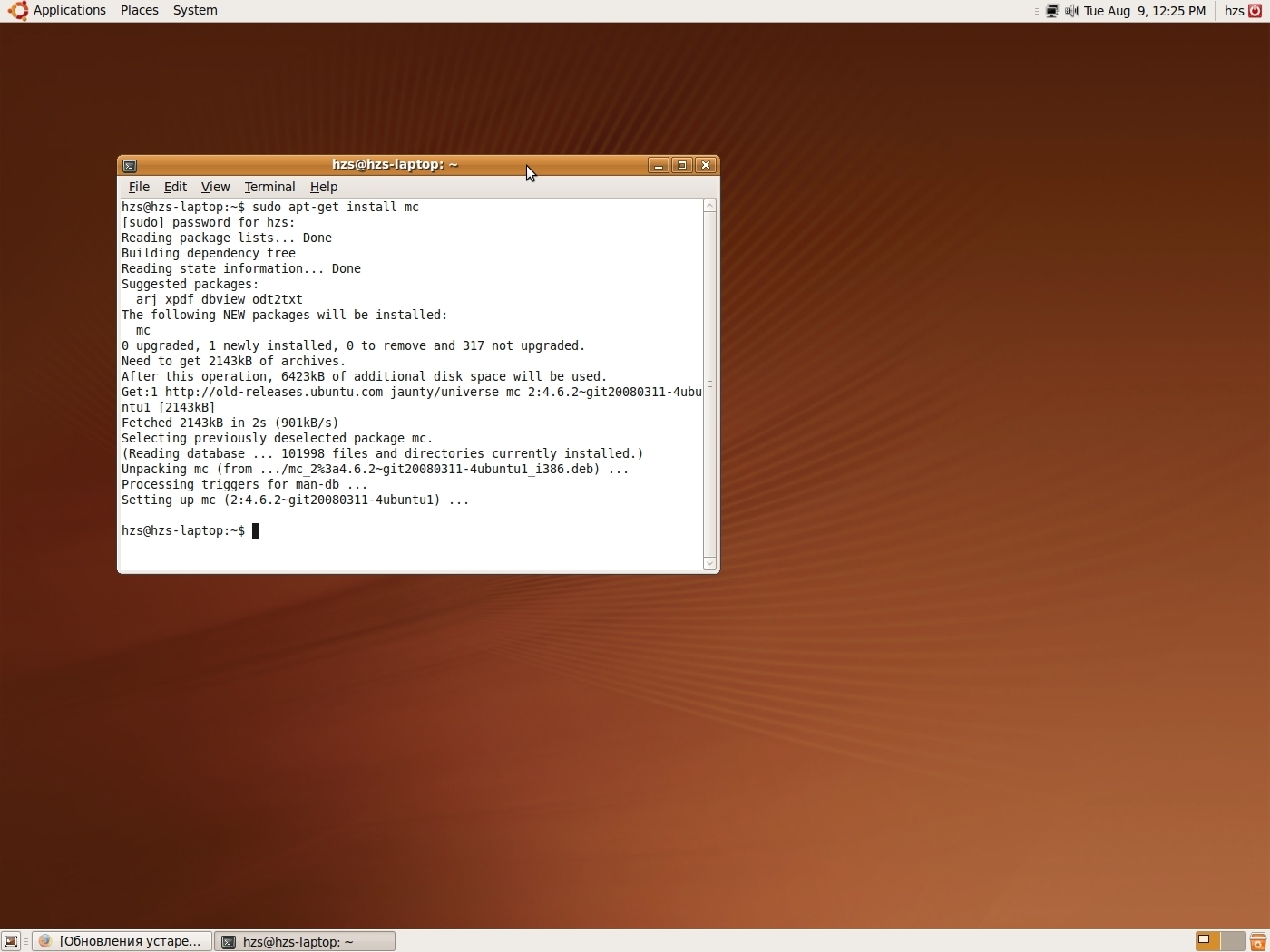
As for the convenience of working with MC files, there is simply no equal:

We set up my favorite audio player and try to listen to the MP3:
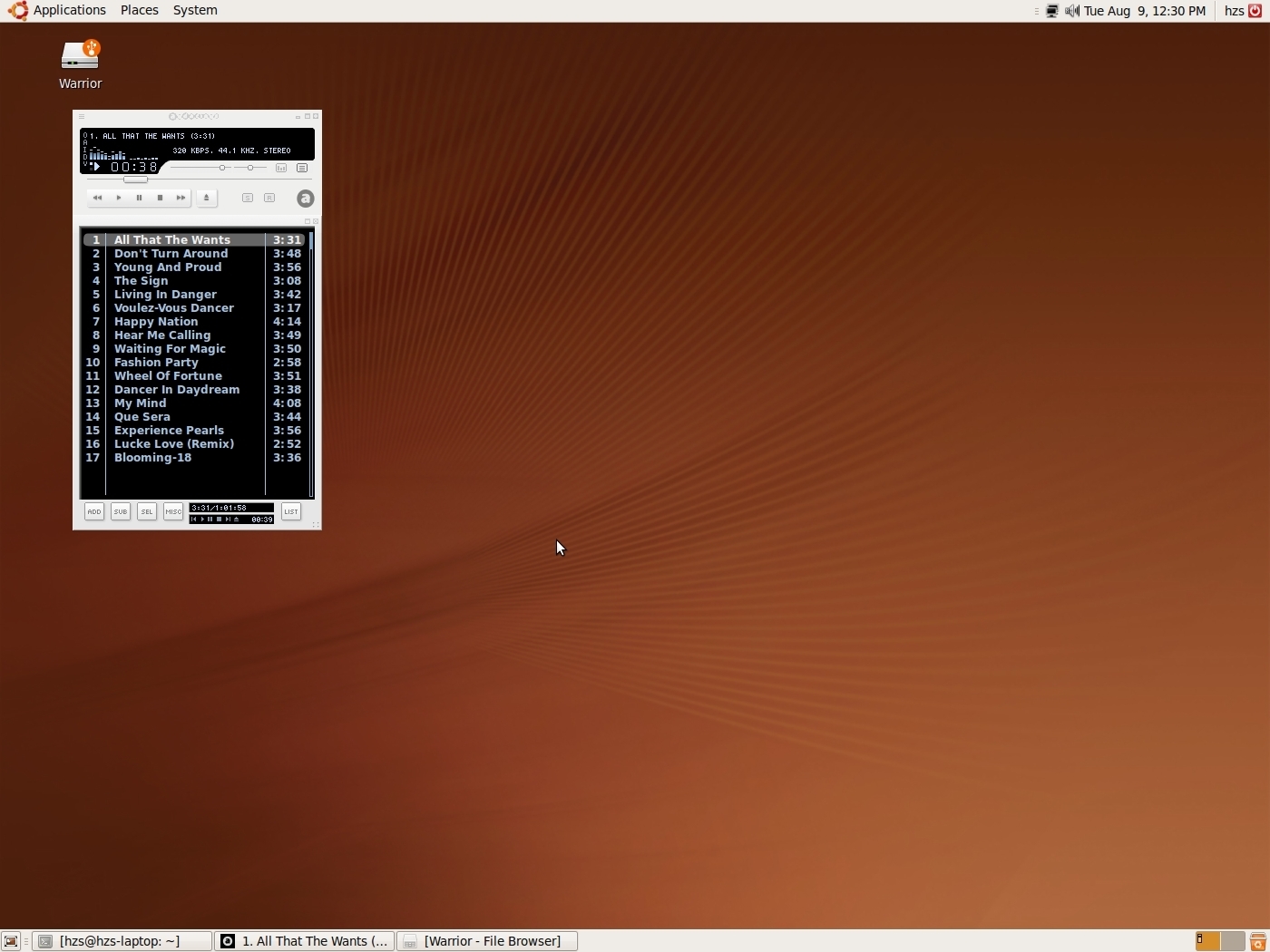
No problem at all. Taking this opportunity, I decided to screen out the office screen saver, pay attention, it’s still Open and also Sun:
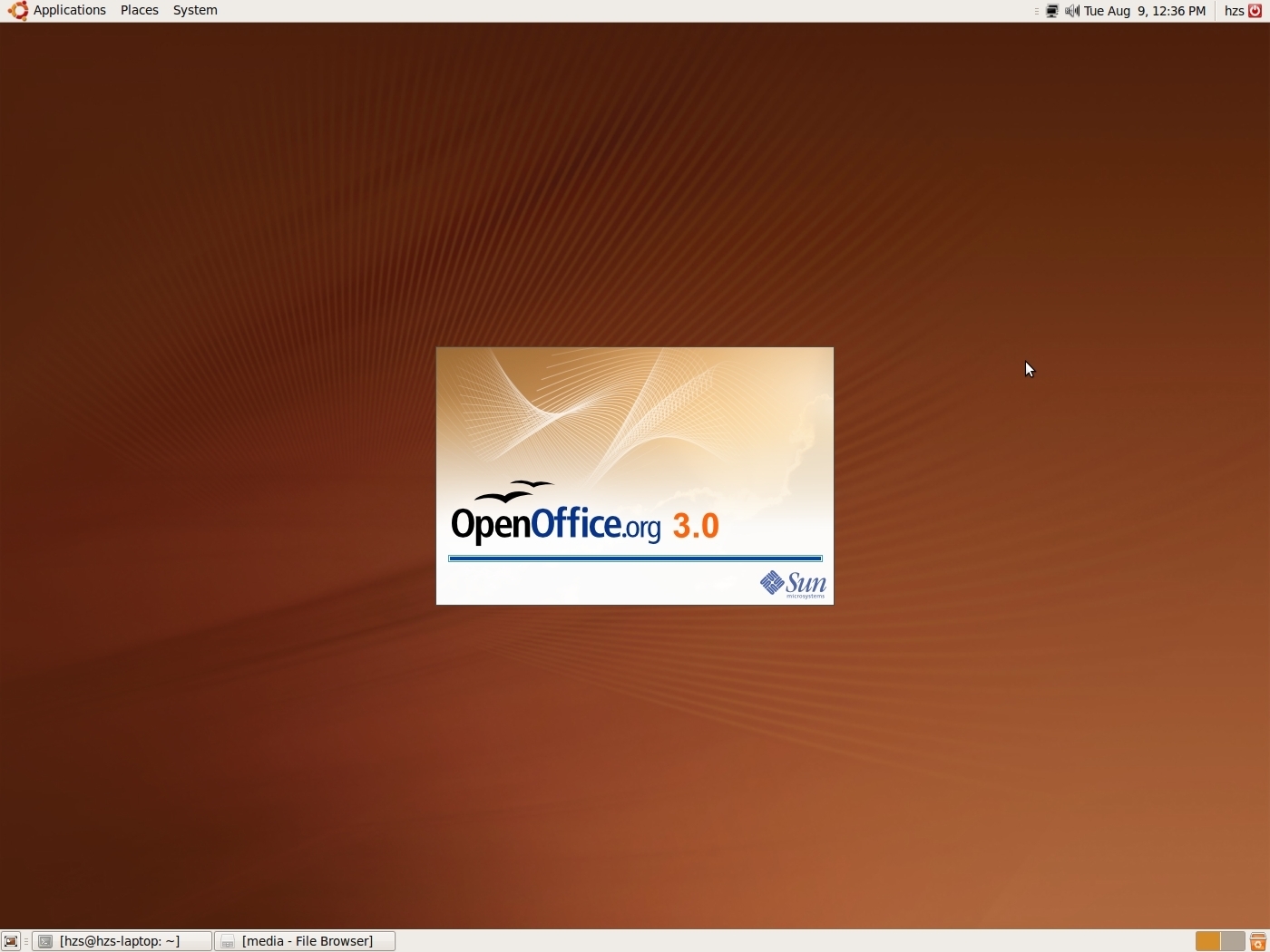
What kind of work without a browser? I updated Firefox to the latest version available in the archive repository, in principle, the pages are readable, although not quite as modern browsers draw them:

I want to see how productive iron is twelve years old, why not run HD video on a Pentium 4?
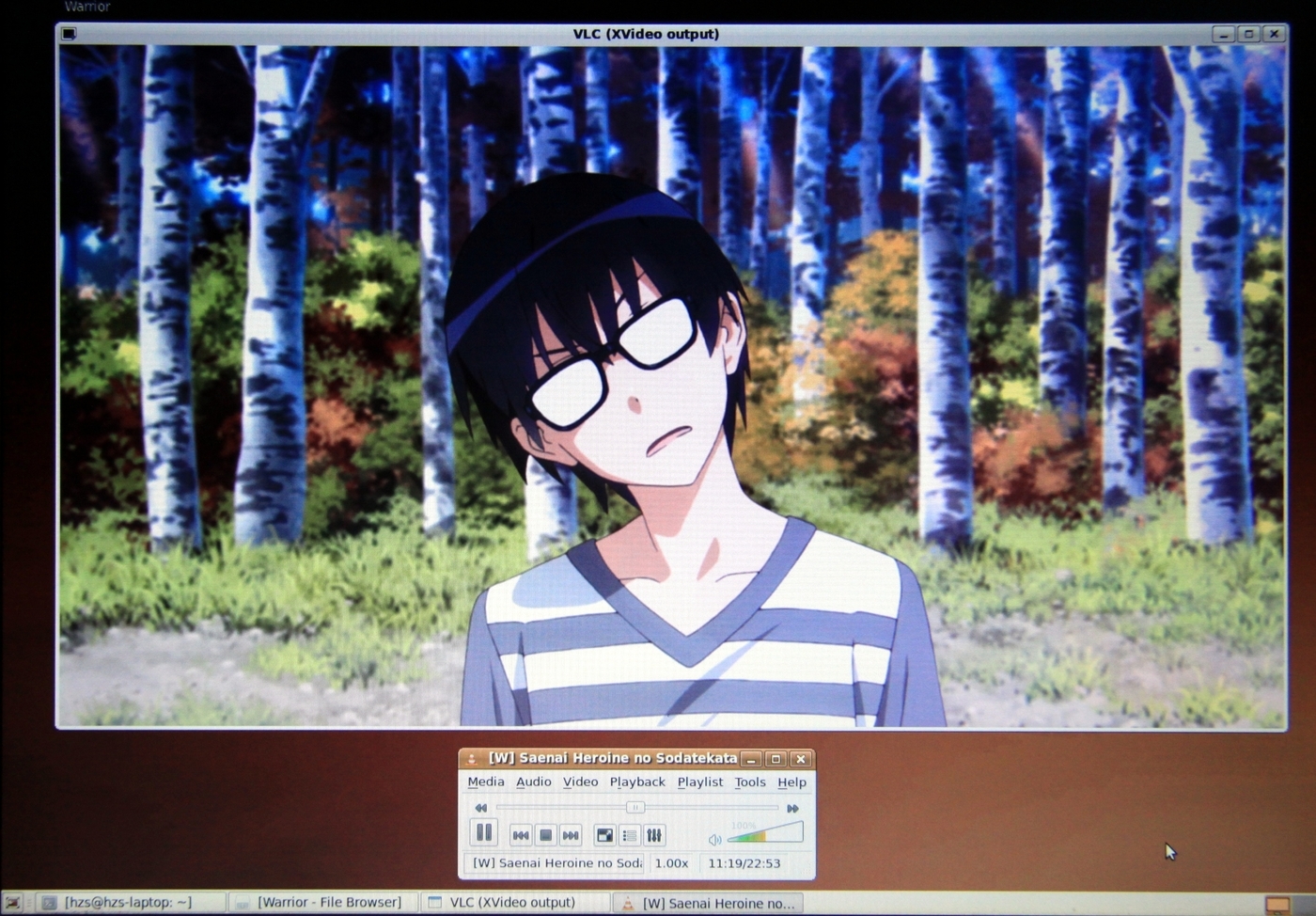
The video went like clockwork, without jerks, squares and ladders, I had to, however, take pictures on the camera, the screenshots of the video in old versions of Linux do not scale and in the screenshot the image turns out to be horrible.
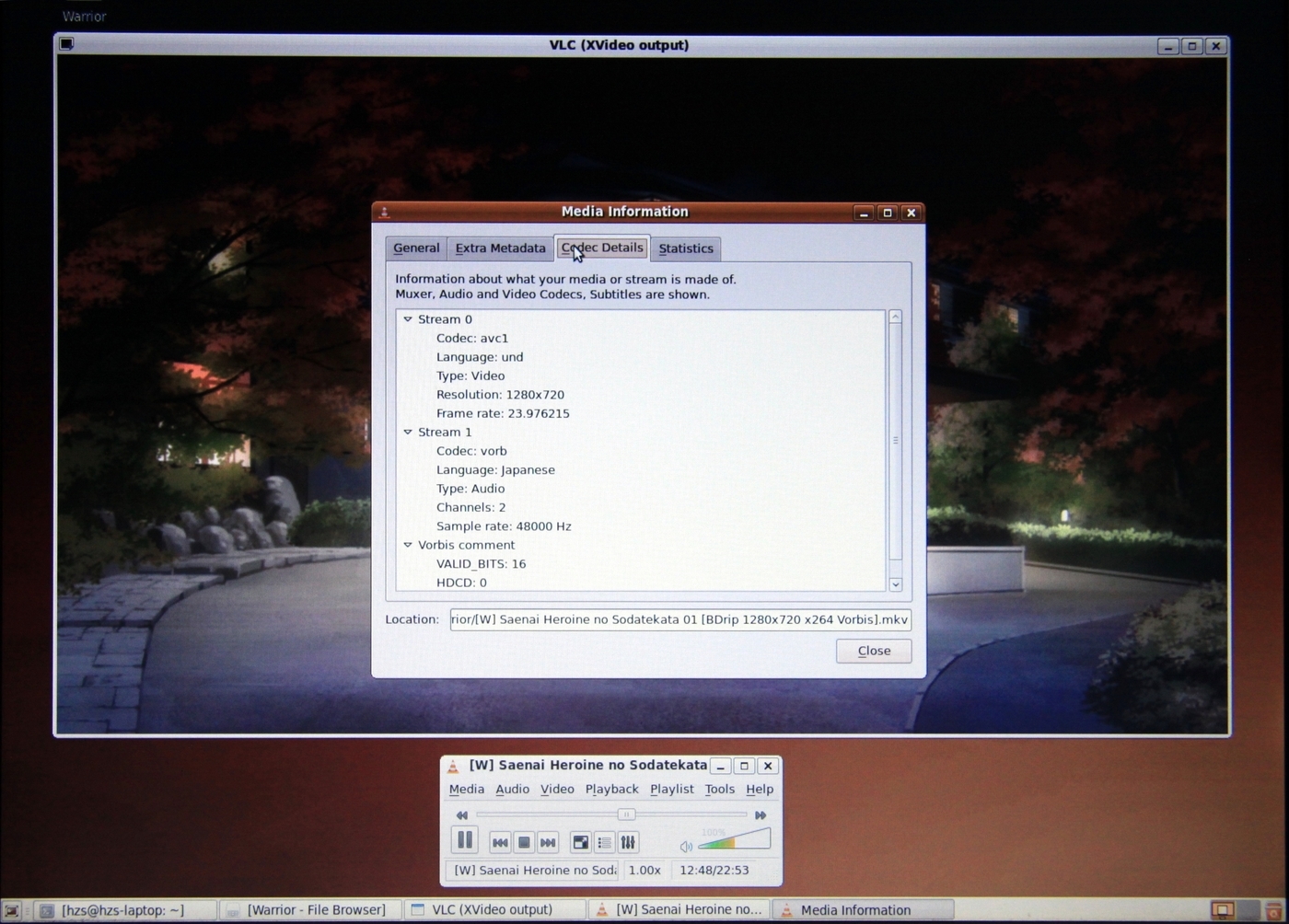
In principle, you can leave Ubuntu 9.04 for surfing the Internet is quite enough, even though the OS is very old, but we go further and the next test subject is Runtu 14.04, quite modern OS, and the animated download with the northern lights is just something :

Runtu 14.04 has an Openbox shell on board. Wi-Fi already sees all networks. Quite a normal modern browser:
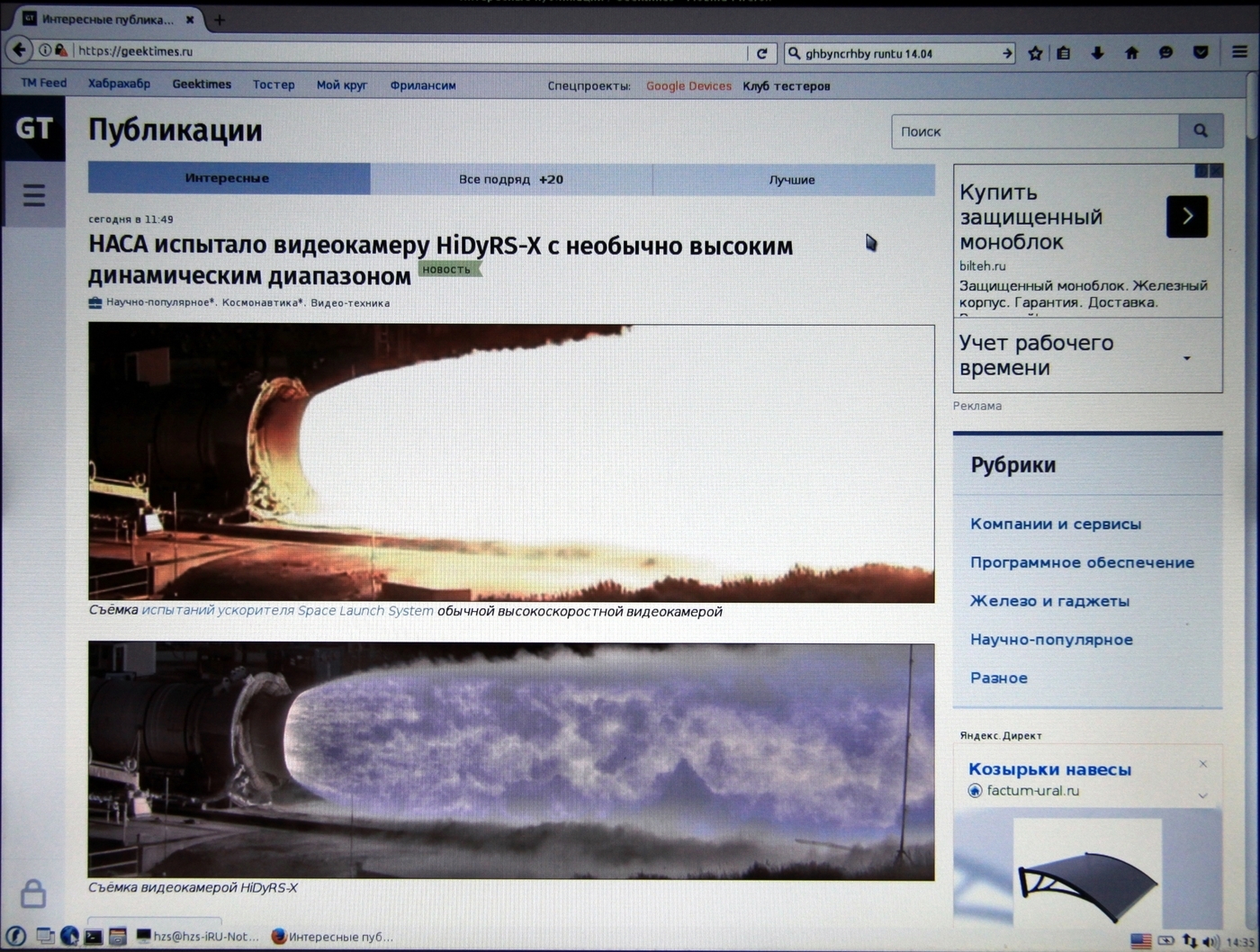
I had to shoot the camera again, in Openbox, in order to take a screenshot, we need dancing with a tambourine, for which there is no time, because I want to try as many as possible.
The video works quite well, besides, you should not forget that we use in general a fresh OS:
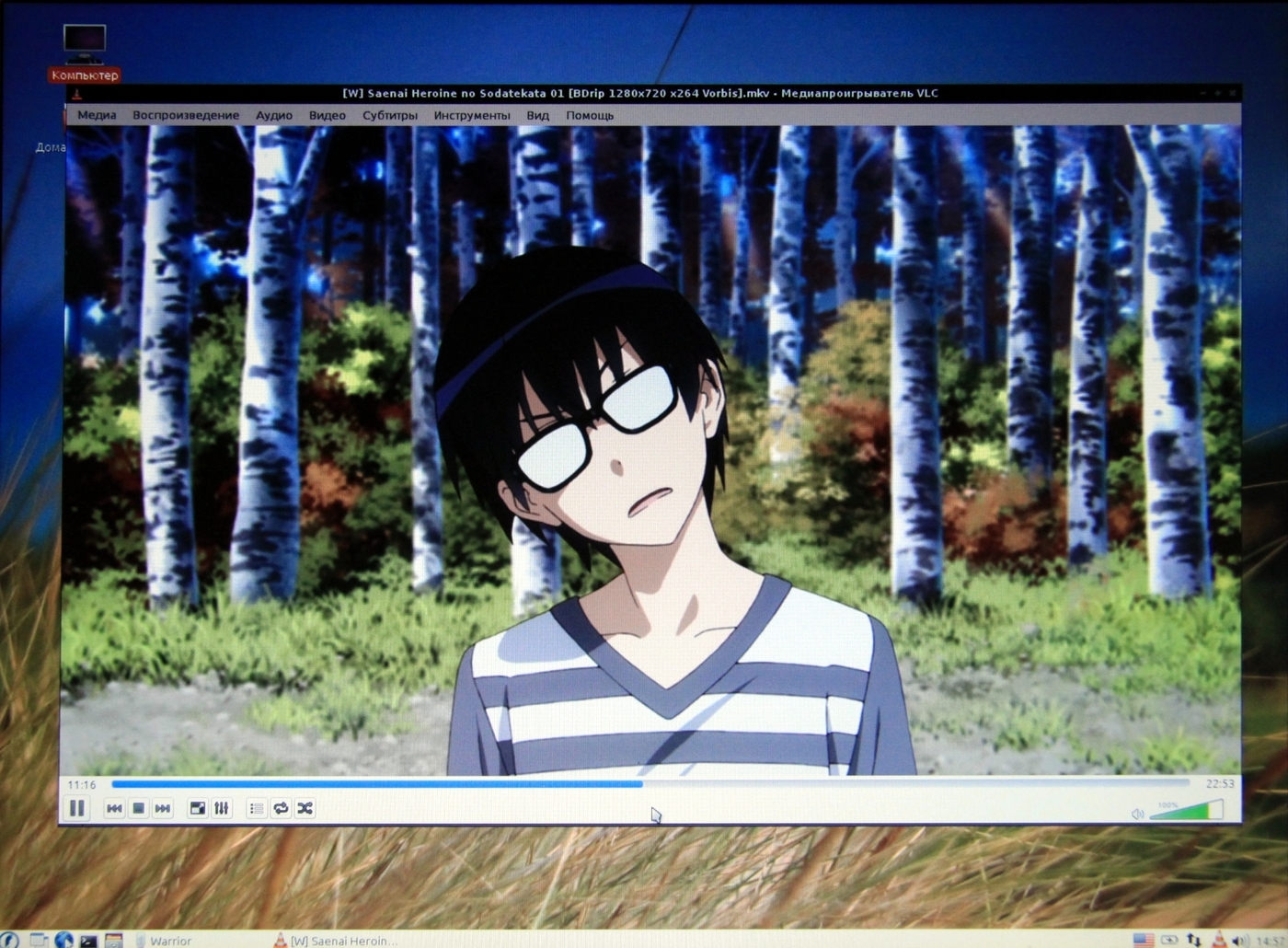
The following experimental Linux Mint operating system is 18. The installation is fairly standard, after installation, there was some kind of tupnya on the authorization screen, after authorization everything was fine. The graphics of Linux Mint 18 is just super, the icons are drawn very clearly, in terms of design and accuracy, the distribution kit can be easily put 11 on a ten-point scale:

About the fact that all the iron started, I no longer write, it is clear. The browser works and looks just great:
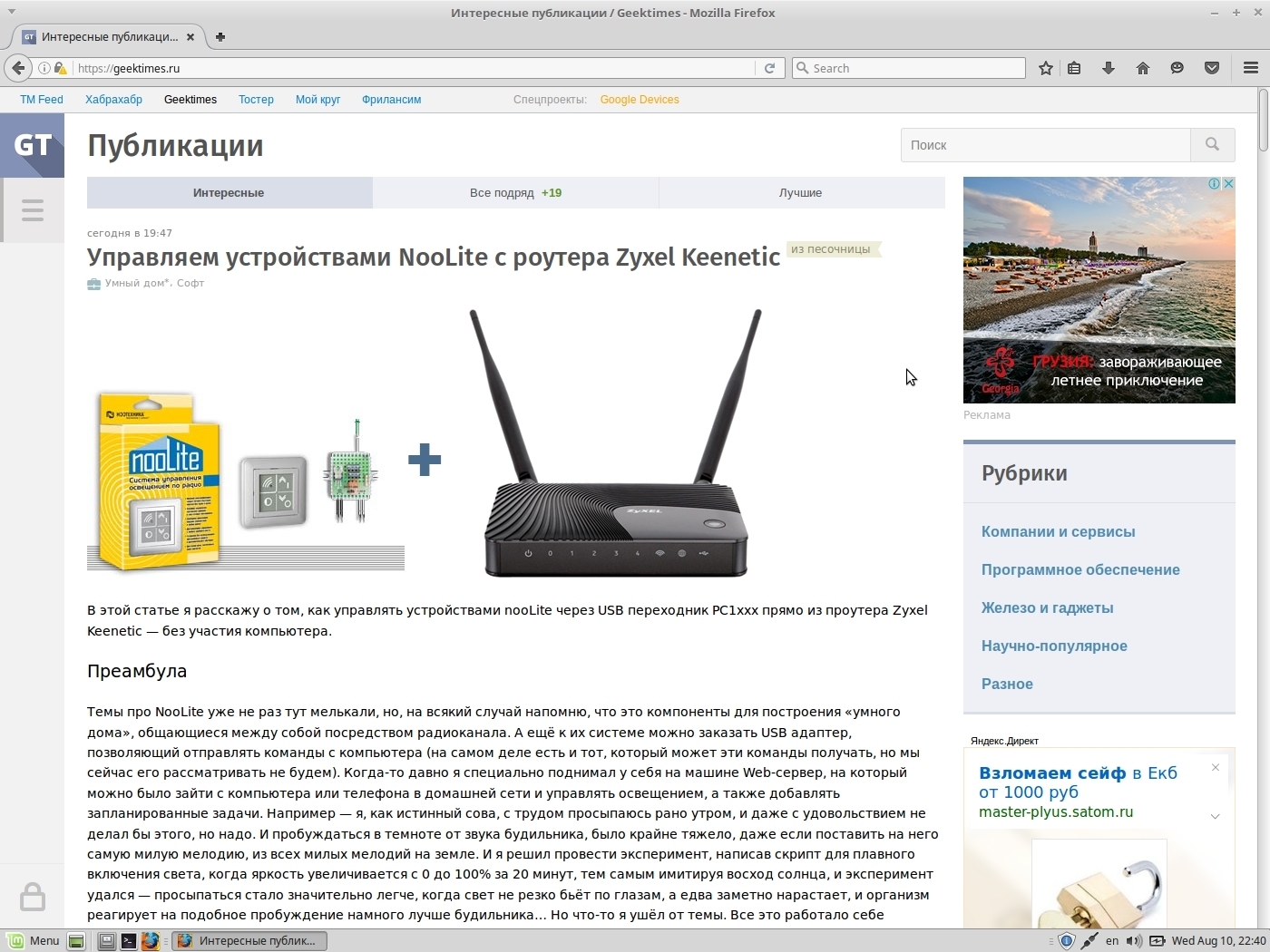
I was once again amused by the ads in the newly installed system, I wonder how the ads are selected, when nothing particularly is known about the user, there are no search queries.
The video again is fine, no brakes, no problems. The only thing that strains is the fact that the noise of the cooler was clearly heard, it is obvious that more resources were needed for iron:

Put something heavier, Fedora 24 is perfect. It looks damn nice, but the interface is noticeably slow, even typing is delayed in a regular text editor, just like in old movies about hackers:
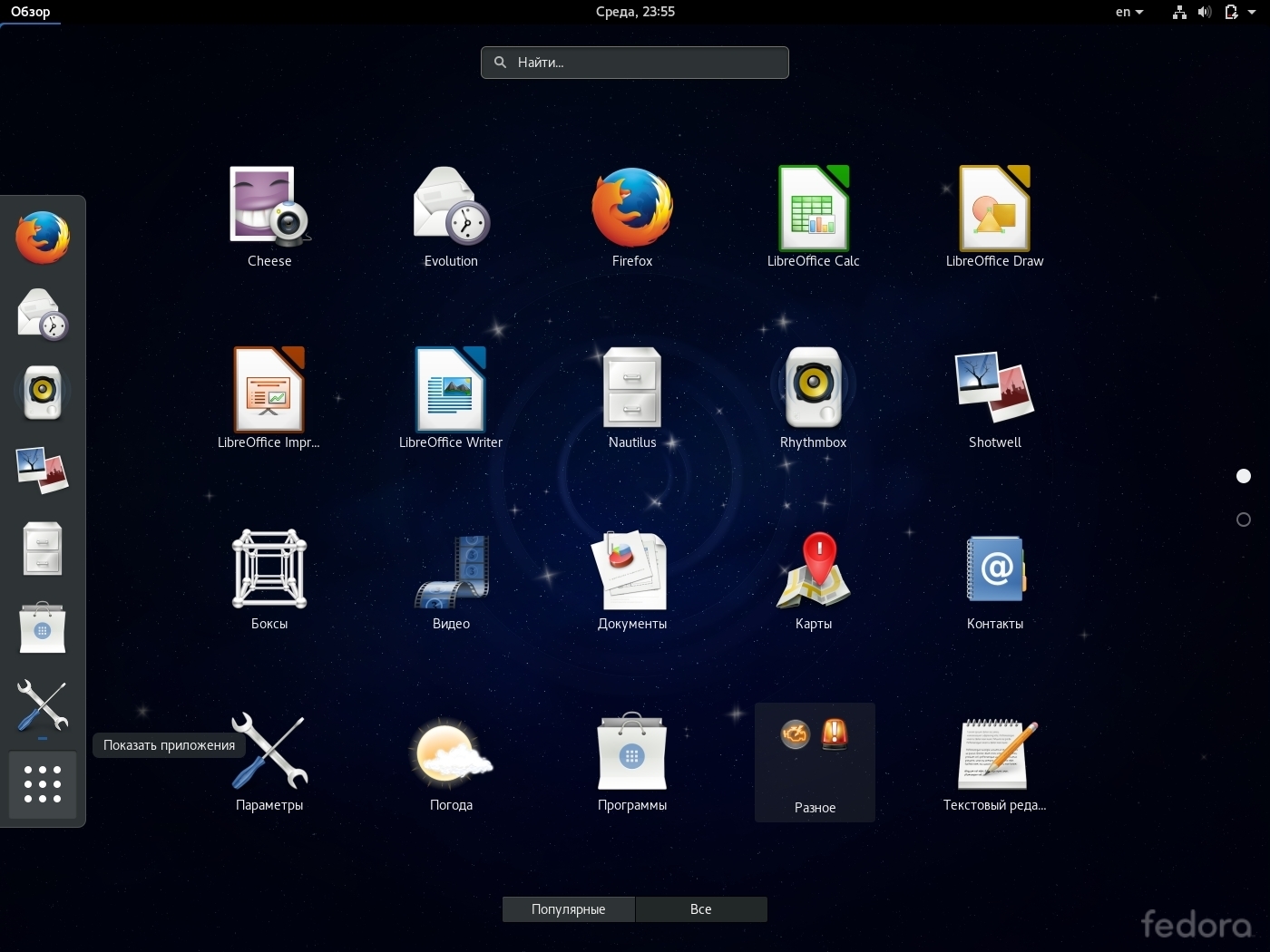
No complaints to the browser, except that the overall responsiveness of the system is not very:
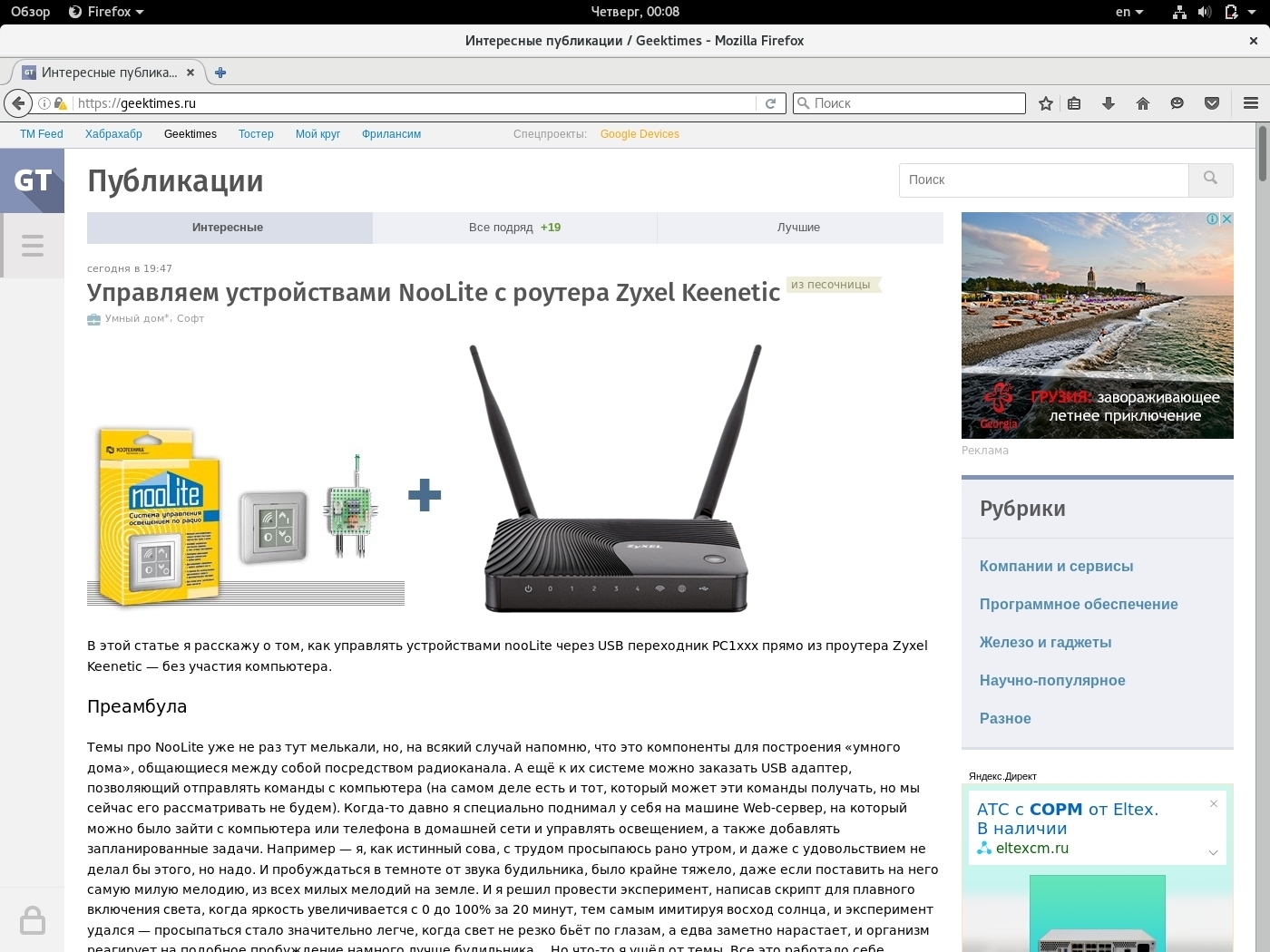
With the installation of packages in Fedora there is some hemorrhoids, we put RPM Fusion, then VLC. When I tried to start the video, instead of the image there was a black screen, the sound worked. The cooler plows without stopping. I highly recommend not putting Fedora 24 on weak machines.
It makes sense to try to put something modern, but not very resource-intensive, such as Runtu XFCE 16.04:

The speed of work is decent, but at the same time the cooler is noisy. Video does not slow down:
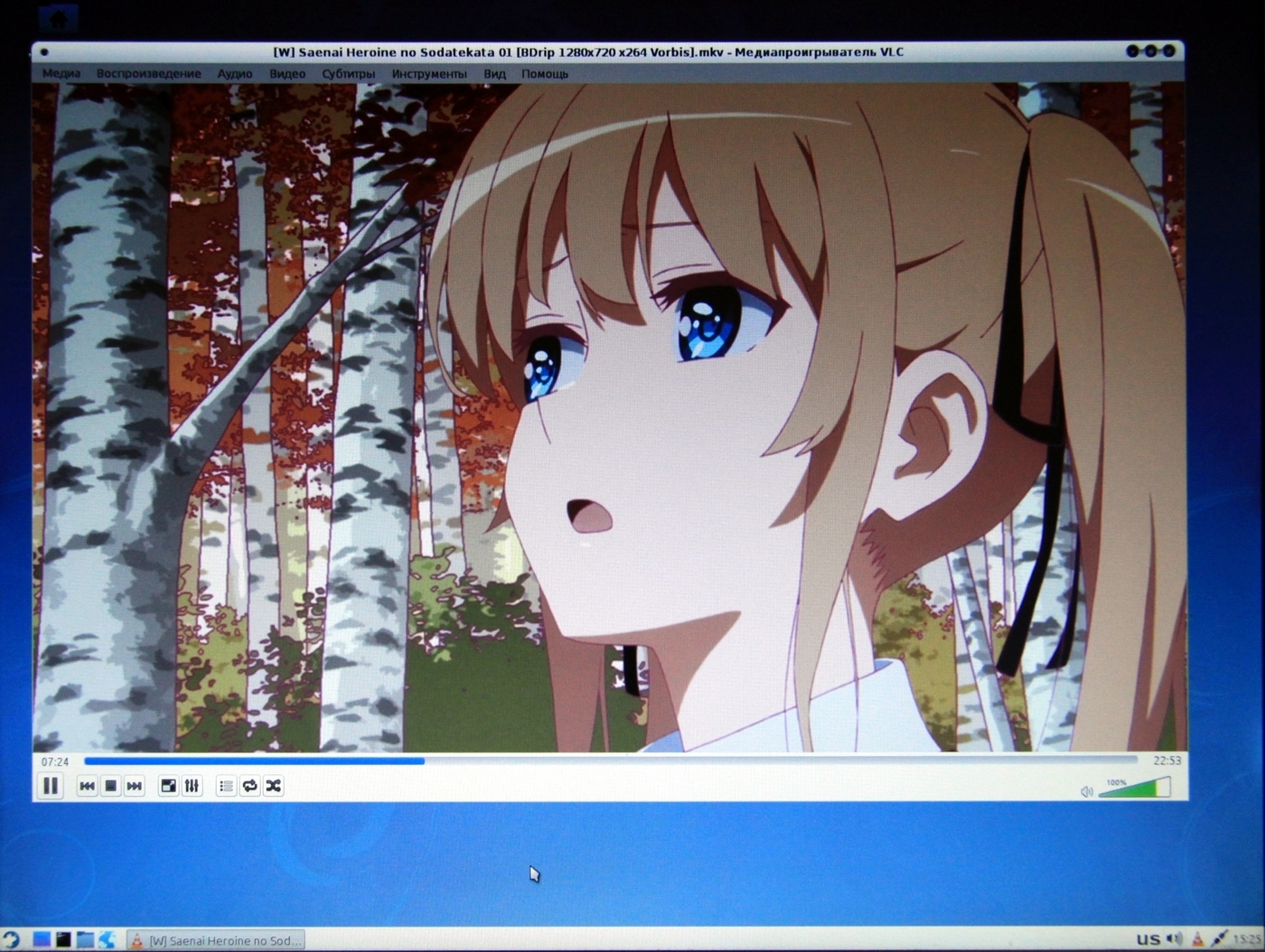
At one time, I also used an excellent openSUSE distribution, try its modern version of openSUSE Leap 42.1:
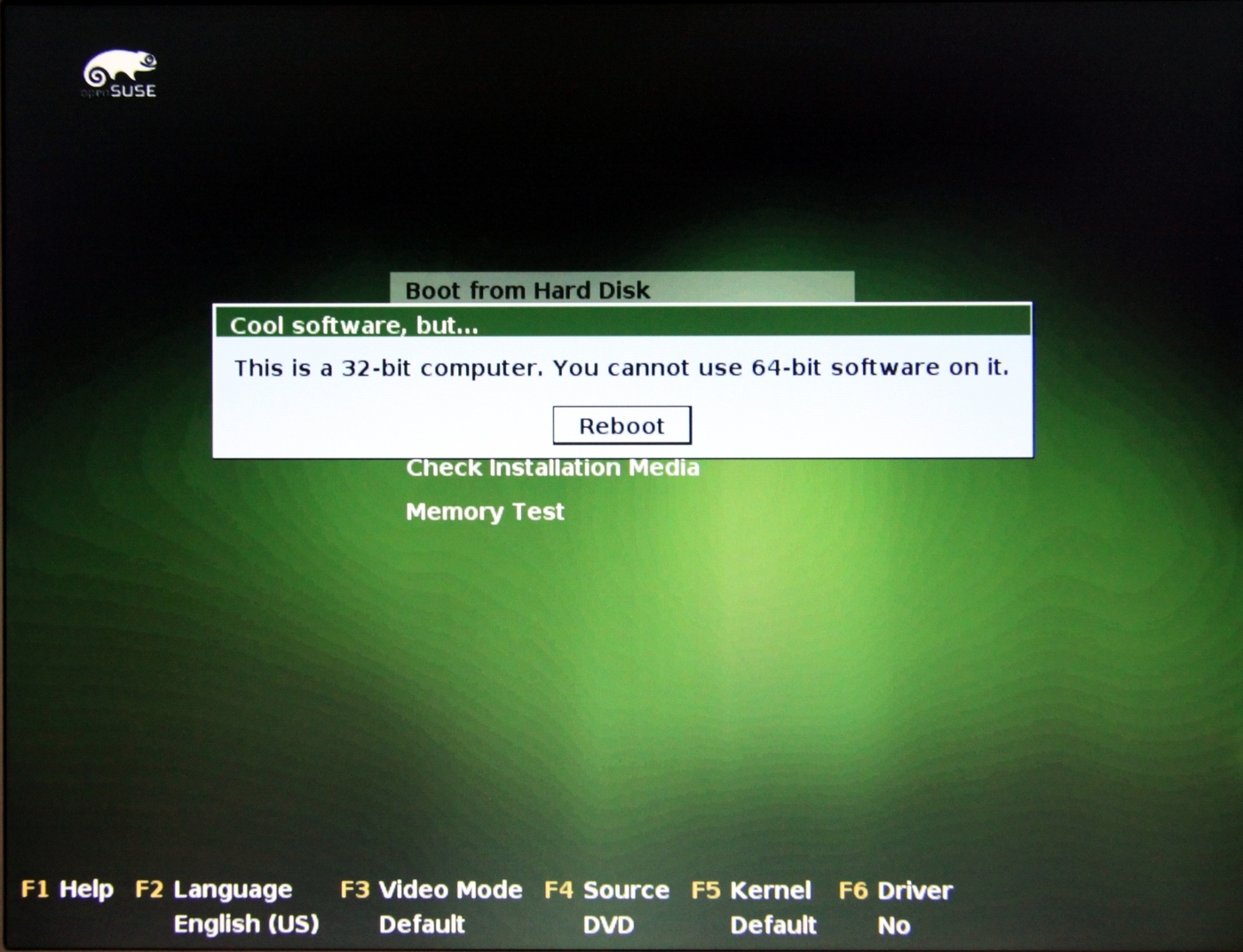
Yes, exactly, the official version of x86 openSUSE Leap 42.1 does not exist.
Next were Gentoo which did not launch the Live DVD. Arch 4.6.4 rose on the login in the text console after installation. Debian 8.5 also starts in the console, graphical shells do not start, neither GDM3, nor LightDM, nor KDE. CentOS 7, like the previous OS started without graphics, in the console.
My working OS is Kubuntu 14.04, let's see how it will work on the old iRU Brava-4215COMBO.
Kubuntu 14.04 slows down, especially on disk operations, the cooler just howls.
The browser looks quite modern but expectedly slows down:

Radio in the browser is quite a play:
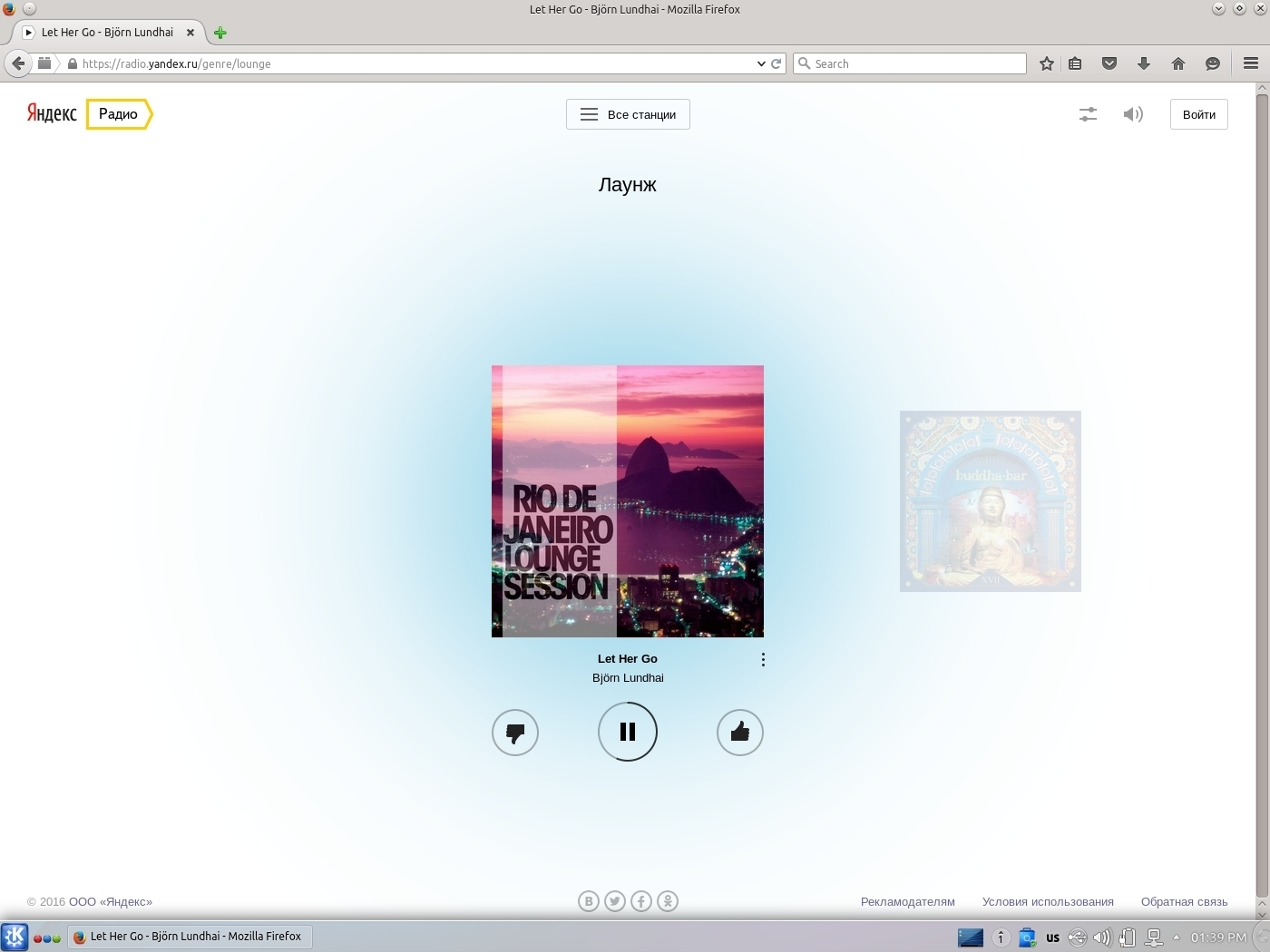
You can put proprietary drivers on a video card, and yes, there is still a driver for this old one:

After installing the proprietary drivers on the video card, the OS interface became much more responsive, it all worked quite quickly. Video renders well:

Inkscape and Gimp are required for my work, both editors cool down, it's impossible to work.
Modern OS Kubuntu 16.04 with KDE5 is installed and started, the cooler is noisy, there are jambs with the appearance, the interface is more or less responsive, the graphics subsystem does not work exactly as it should:

Video playback works without any complaints:

The latest Ubuntu 16.04 OS is installed, but I didn’t see anything except the welcome window and the cursor on a black background.
Having an old, even somewhat already rare laptop, I wanted to have a ponastalgic. For the experiment I tried to install Windows 95. The photos, to my great regret, have not been preserved. In the Windows 95 installer, the PCMCIA ports did not work, the USB mouse did not work, but the laptop touchpad worked. After launching, I grabbed the following problem: Insufficient Memory to Initialize Windows. Now I know how to get around this problem, but then, when I was taking photos, I didn’t bother much and started installing Windows 98:

After installation, I grabbed the same problem as Windows 95:

I gave the laptop to my parents a long time ago, so I have no time to experiment with Windows 95 and 98, but I managed to play well with Windows 2000:
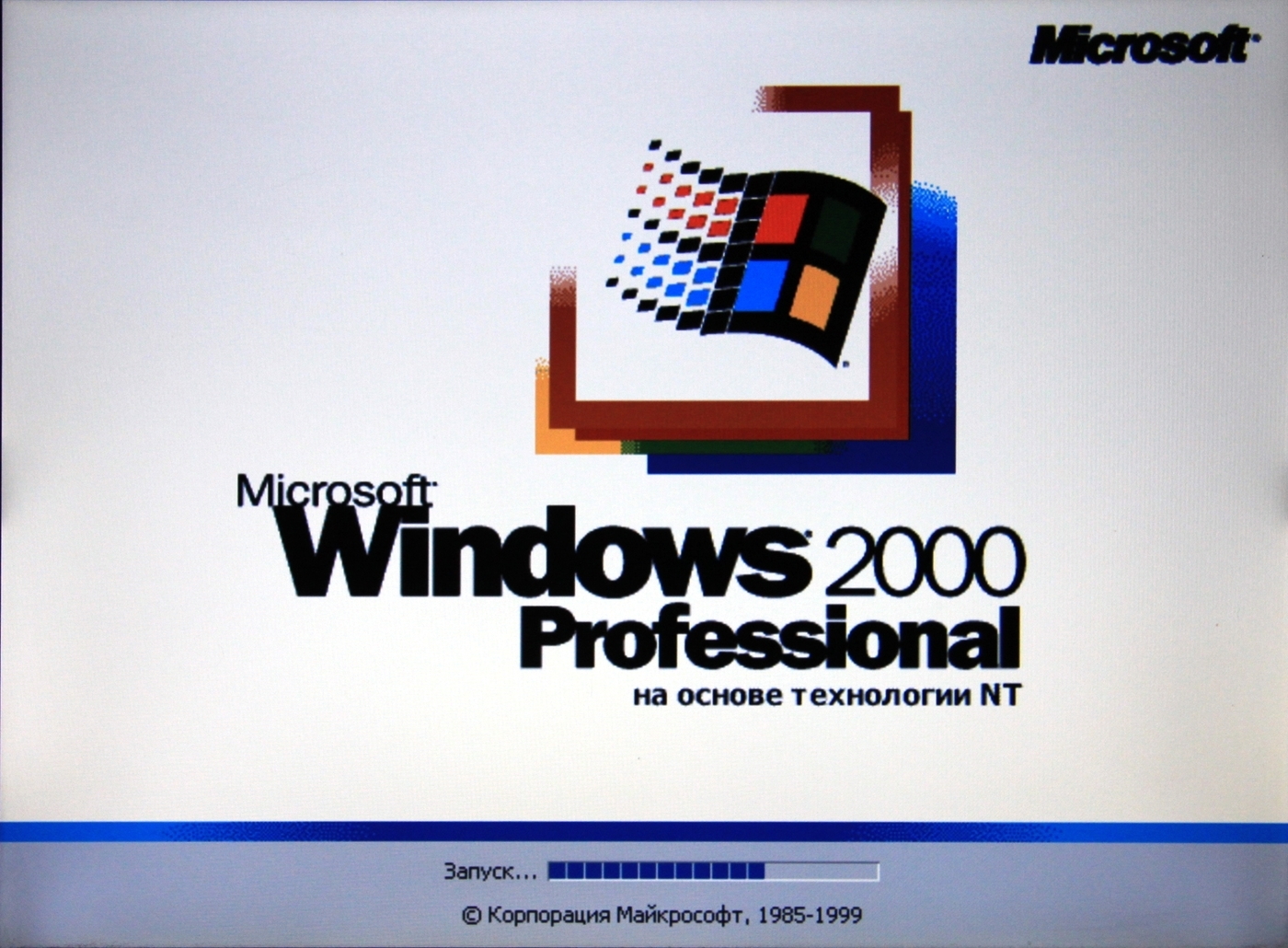
I managed to put all the drivers on all the available hardware, PCMCIA started up, the sound, even the driver I managed to fasten.
A modern browser does not put on Windows 2000, I had to install a browser of that time:
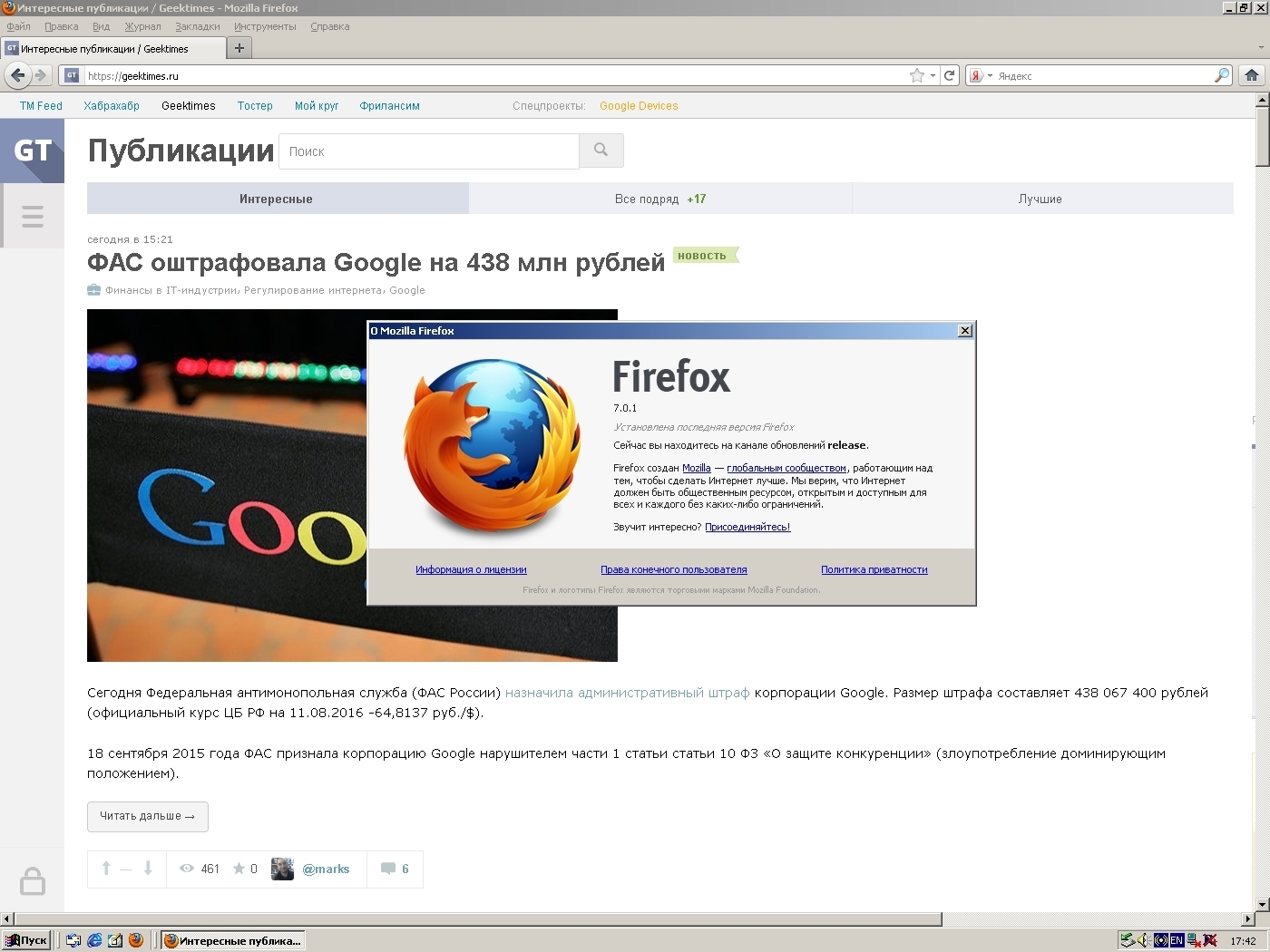
Here is another screenshot of the system properties:

And the screen:
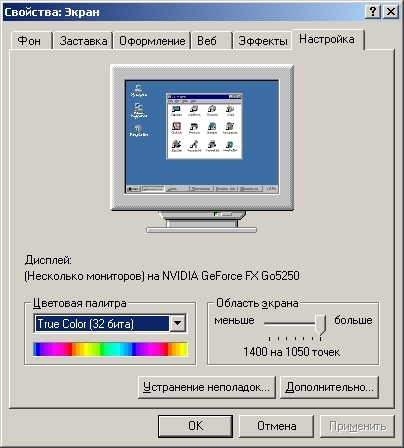
Remember this fun toy like Pinball? She is here:

But I could not start the video at all, I could not find VLC under Windows 2000, codecs could not decrypt the modern codec, instead of the picture there is a black screen:

And this is how a Wi-Fi connection in Windows 2000 looks like, after some dances with a tambourine:

Windows 2000 left behind a lot of positive impressions, instantly fast, pleasant, but neither the antivirus is plugged in nor the modern software, so leaving Windows 2000 to parents on a laptop is not a good idea.
Windows XP naturally worked on this laptop, I showed it in the first part of the article , so it's time to try something a bit more modern:
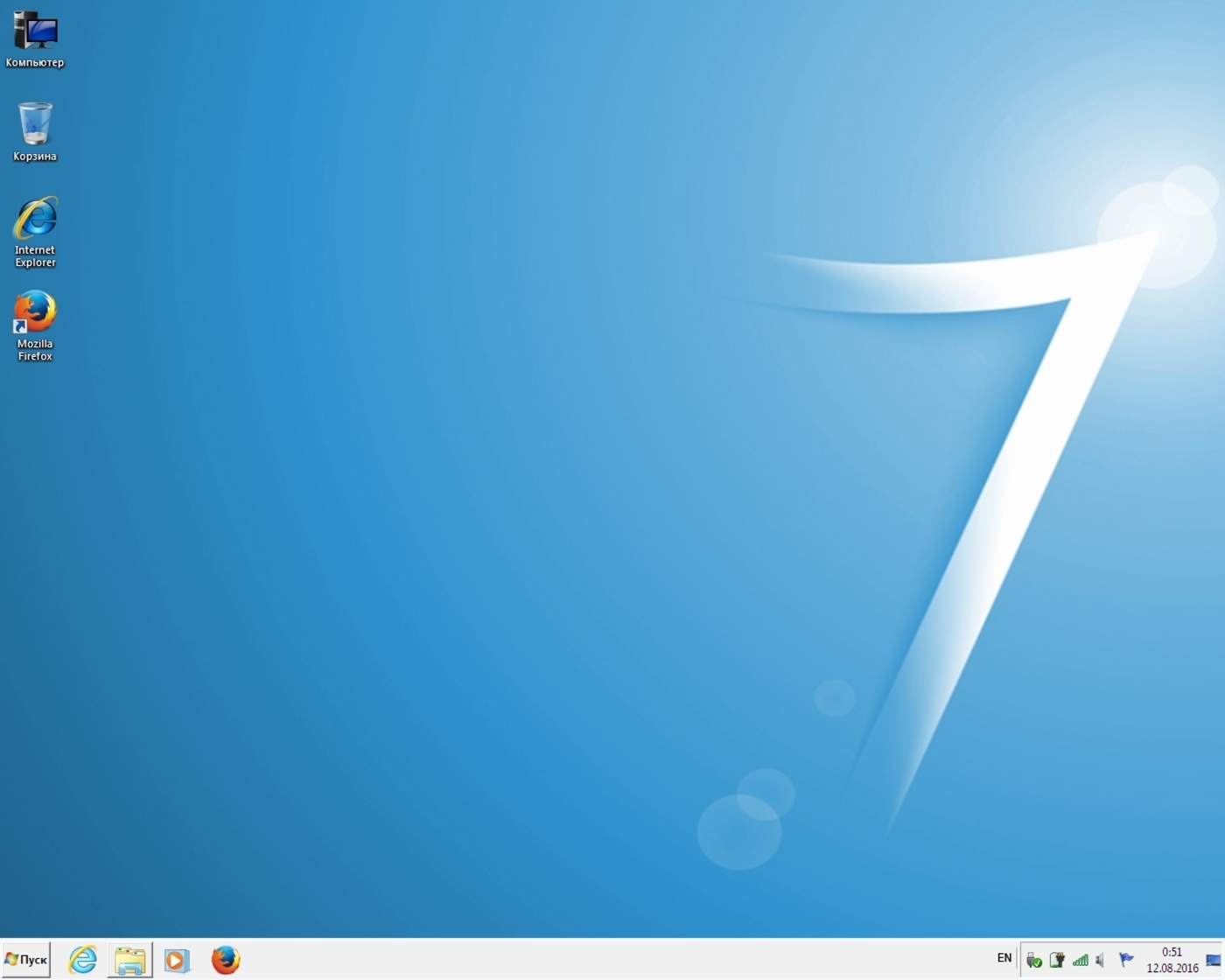
In principle, the OS was installed and earned, but there are no drivers for the Windows 7 laptop graphics card, so there is no point in comparing the picture.
Of course, I tried to install Windows 8.1 and Windows 10, both got up. Here is the launch of Windows 8.1 and Windows 10 on the Pentium 4:
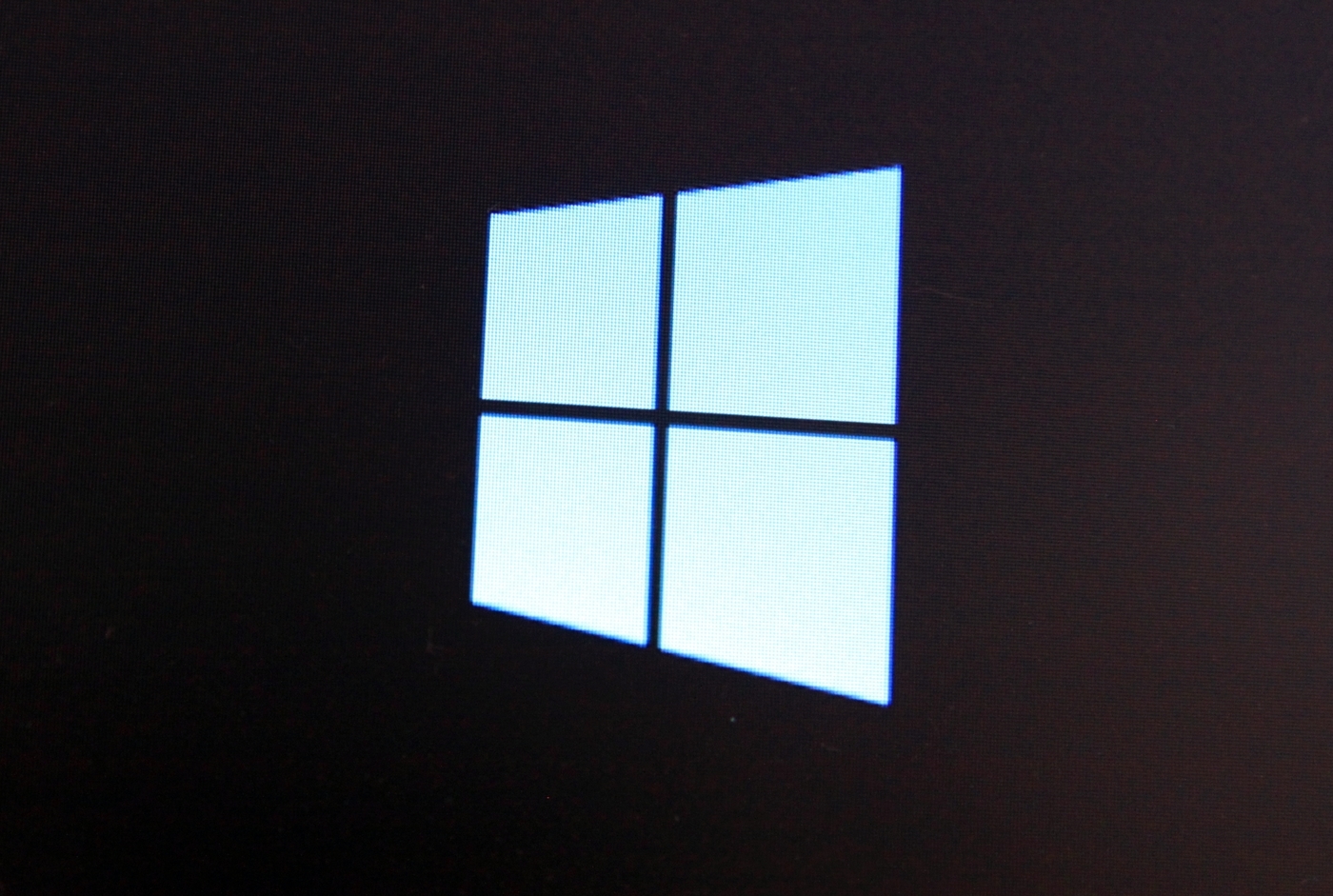
After that, this error appears:

I’m wondering why they didn’t earn Windows 8.1 and Windows 10.
So, a lot of distributions and operating systems were tried, you still need to choose what to leave for parents to use on this old laptop, the OS should satisfy such criteria as speed of work, reliability, clarity and ease of use.
The choice was between Windows XP and Runtu-Lite-14.04. I settled on Runtu-Lite-14.04 for three reasons: reliability, safety from viruses and modernity. Windows XP is still good, but not very safe anymore, I found the choice of a totally Russified, lightweight Linux distribution more rational:
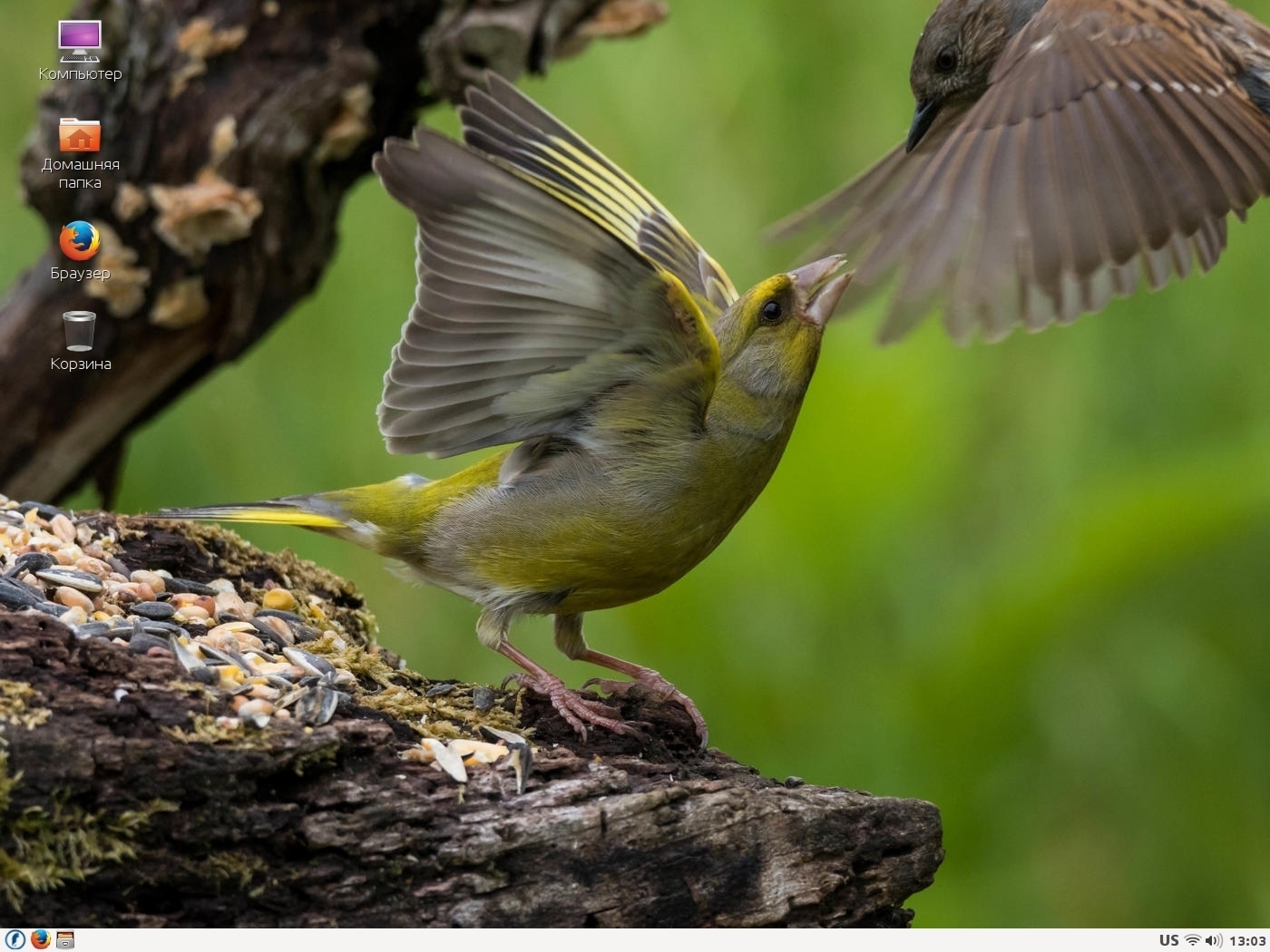
The cooler is almost inaudible, the browser is smart and modern enough to support plug-ins for cleaning out any trash:
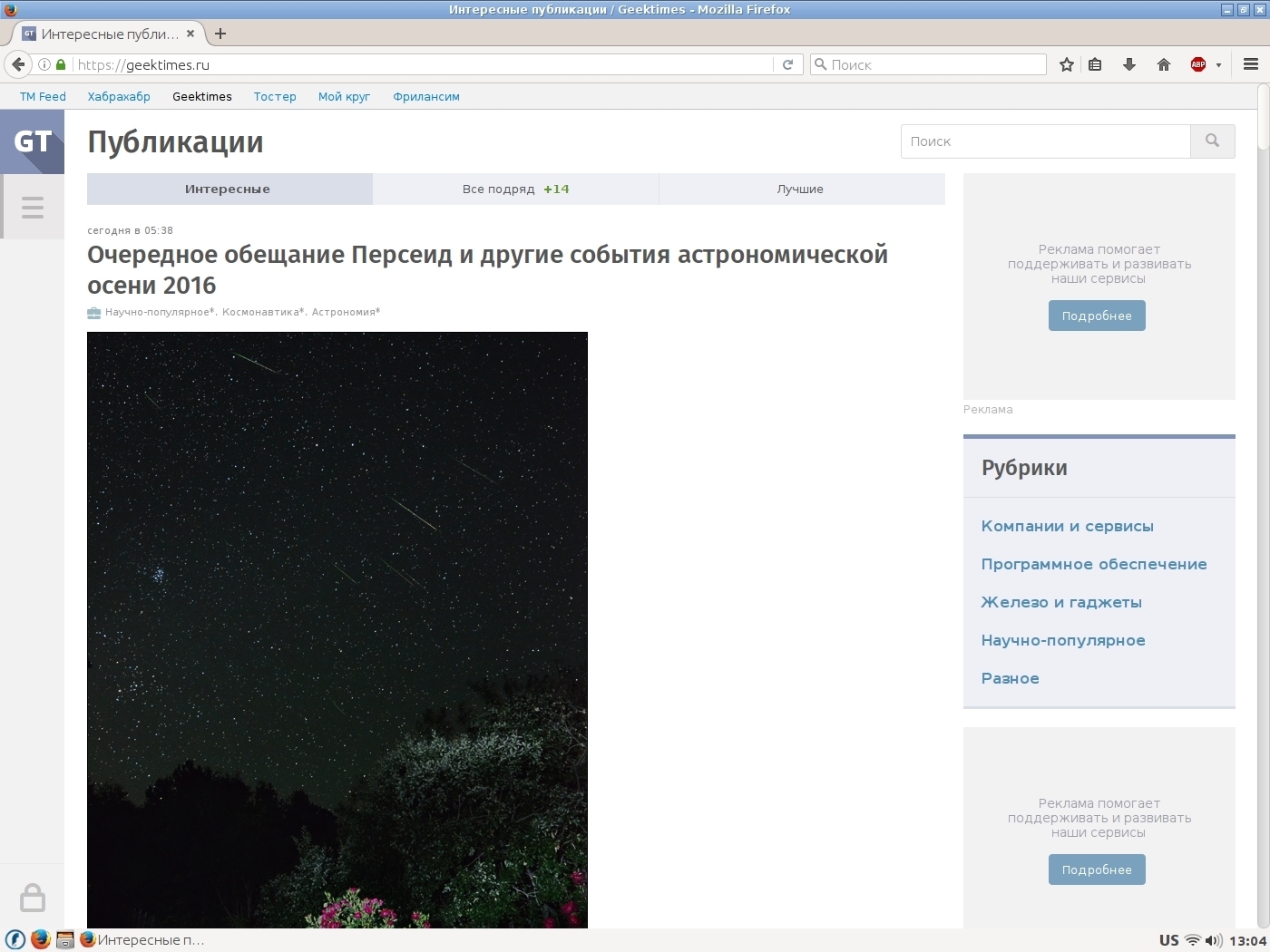
HD video runs without problems, although parents do not need it at all:

In Runtu-Lite-14.04, everything works fast, for parents just right.
This is how the new life of the old iRU Brava-4215COMBO laptop began in the modern world.
In the first part, I told about the laptop itself and its small modifications, now it’s time to see which operating systems this laptop can pull.
We have time for experiments!
Now the Linux world is much closer to me, so I'll start with it.
The first distribution that allowed me to completely stop using Windows tools for work was Ubuntu 9.04. I decided to put it. Despite the fact that Ubuntu 9.04 was placed on the iron five years ago, everything is fine and quickly established.
')
The authorization screen is pleased with its brevity and simplicity:

I think it is worth recalling that with time, old hardware gets worse and worse in Windows, and in Linux, on the contrary, new hardware does not always work as it should (and sometimes it doesn’t work out of the box at all), and over time the situation with the drivers and Support for legacy (moderately) devices is getting better.
All the iron worked out of the box, PCMCIA, USB and Wi-Fi, sound, video, nothing to complain about. The only interesting thing is that Wi-Fi does not see access points, in the name of which there are punctuation marks, for example, dots or spaces. I had to connect to the network with a wire. No problems, stuck and got all the settings via DHCP.
Of course, by today's standards, Ubuntu 9.04 is still a dinosaur piece and I would like to update it if possible and be able to install applications. For obvious reasons, the repository has long been unsupported and not updated, but it exists, although it is somewhat hidden. You can get a live repository by changing all entries in ru.archive.ubuntu.com to old-releases.ubuntu.com in the /etc/apt/sources.list file, and you just need to delete the section containing security.ubuntu.com .
The design of Ubuntu 9.04 is minimalistic, everything is simple, clear and in its place, and most importantly, the interaction with the system is damn convenient!
After updating the system, you can put some software:

As for the convenience of working with MC files, there is simply no equal:

We set up my favorite audio player and try to listen to the MP3:

No problem at all. Taking this opportunity, I decided to screen out the office screen saver, pay attention, it’s still Open and also Sun:

What kind of work without a browser? I updated Firefox to the latest version available in the archive repository, in principle, the pages are readable, although not quite as modern browsers draw them:

I want to see how productive iron is twelve years old, why not run HD video on a Pentium 4?

The video went like clockwork, without jerks, squares and ladders, I had to, however, take pictures on the camera, the screenshots of the video in old versions of Linux do not scale and in the screenshot the image turns out to be horrible.

In principle, you can leave Ubuntu 9.04 for surfing the Internet is quite enough, even though the OS is very old, but we go further and the next test subject is Runtu 14.04, quite modern OS, and the animated download with the northern lights is just something :

Runtu 14.04 has an Openbox shell on board. Wi-Fi already sees all networks. Quite a normal modern browser:

I had to shoot the camera again, in Openbox, in order to take a screenshot, we need dancing with a tambourine, for which there is no time, because I want to try as many as possible.
The video works quite well, besides, you should not forget that we use in general a fresh OS:

The following experimental Linux Mint operating system is 18. The installation is fairly standard, after installation, there was some kind of tupnya on the authorization screen, after authorization everything was fine. The graphics of Linux Mint 18 is just super, the icons are drawn very clearly, in terms of design and accuracy, the distribution kit can be easily put 11 on a ten-point scale:

About the fact that all the iron started, I no longer write, it is clear. The browser works and looks just great:

I was once again amused by the ads in the newly installed system, I wonder how the ads are selected, when nothing particularly is known about the user, there are no search queries.
The video again is fine, no brakes, no problems. The only thing that strains is the fact that the noise of the cooler was clearly heard, it is obvious that more resources were needed for iron:

Put something heavier, Fedora 24 is perfect. It looks damn nice, but the interface is noticeably slow, even typing is delayed in a regular text editor, just like in old movies about hackers:

No complaints to the browser, except that the overall responsiveness of the system is not very:

With the installation of packages in Fedora there is some hemorrhoids, we put RPM Fusion, then VLC. When I tried to start the video, instead of the image there was a black screen, the sound worked. The cooler plows without stopping. I highly recommend not putting Fedora 24 on weak machines.
It makes sense to try to put something modern, but not very resource-intensive, such as Runtu XFCE 16.04:

The speed of work is decent, but at the same time the cooler is noisy. Video does not slow down:

At one time, I also used an excellent openSUSE distribution, try its modern version of openSUSE Leap 42.1:

Yes, exactly, the official version of x86 openSUSE Leap 42.1 does not exist.
Next were Gentoo which did not launch the Live DVD. Arch 4.6.4 rose on the login in the text console after installation. Debian 8.5 also starts in the console, graphical shells do not start, neither GDM3, nor LightDM, nor KDE. CentOS 7, like the previous OS started without graphics, in the console.
My working OS is Kubuntu 14.04, let's see how it will work on the old iRU Brava-4215COMBO.
Kubuntu 14.04 slows down, especially on disk operations, the cooler just howls.
The browser looks quite modern but expectedly slows down:

Radio in the browser is quite a play:

You can put proprietary drivers on a video card, and yes, there is still a driver for this old one:

After installing the proprietary drivers on the video card, the OS interface became much more responsive, it all worked quite quickly. Video renders well:

Inkscape and Gimp are required for my work, both editors cool down, it's impossible to work.
Modern OS Kubuntu 16.04 with KDE5 is installed and started, the cooler is noisy, there are jambs with the appearance, the interface is more or less responsive, the graphics subsystem does not work exactly as it should:

Video playback works without any complaints:

The latest Ubuntu 16.04 OS is installed, but I didn’t see anything except the welcome window and the cursor on a black background.
Having an old, even somewhat already rare laptop, I wanted to have a ponastalgic. For the experiment I tried to install Windows 95. The photos, to my great regret, have not been preserved. In the Windows 95 installer, the PCMCIA ports did not work, the USB mouse did not work, but the laptop touchpad worked. After launching, I grabbed the following problem: Insufficient Memory to Initialize Windows. Now I know how to get around this problem, but then, when I was taking photos, I didn’t bother much and started installing Windows 98:

After installation, I grabbed the same problem as Windows 95:

I gave the laptop to my parents a long time ago, so I have no time to experiment with Windows 95 and 98, but I managed to play well with Windows 2000:

I managed to put all the drivers on all the available hardware, PCMCIA started up, the sound, even the driver I managed to fasten.
A modern browser does not put on Windows 2000, I had to install a browser of that time:

Here is another screenshot of the system properties:

And the screen:

Remember this fun toy like Pinball? She is here:

But I could not start the video at all, I could not find VLC under Windows 2000, codecs could not decrypt the modern codec, instead of the picture there is a black screen:

And this is how a Wi-Fi connection in Windows 2000 looks like, after some dances with a tambourine:

Windows 2000 left behind a lot of positive impressions, instantly fast, pleasant, but neither the antivirus is plugged in nor the modern software, so leaving Windows 2000 to parents on a laptop is not a good idea.
Windows XP naturally worked on this laptop, I showed it in the first part of the article , so it's time to try something a bit more modern:

In principle, the OS was installed and earned, but there are no drivers for the Windows 7 laptop graphics card, so there is no point in comparing the picture.
Of course, I tried to install Windows 8.1 and Windows 10, both got up. Here is the launch of Windows 8.1 and Windows 10 on the Pentium 4:

After that, this error appears:

I’m wondering why they didn’t earn Windows 8.1 and Windows 10.
So, a lot of distributions and operating systems were tried, you still need to choose what to leave for parents to use on this old laptop, the OS should satisfy such criteria as speed of work, reliability, clarity and ease of use.
The choice was between Windows XP and Runtu-Lite-14.04. I settled on Runtu-Lite-14.04 for three reasons: reliability, safety from viruses and modernity. Windows XP is still good, but not very safe anymore, I found the choice of a totally Russified, lightweight Linux distribution more rational:

The cooler is almost inaudible, the browser is smart and modern enough to support plug-ins for cleaning out any trash:

HD video runs without problems, although parents do not need it at all:

In Runtu-Lite-14.04, everything works fast, for parents just right.
This is how the new life of the old iRU Brava-4215COMBO laptop began in the modern world.
Source: https://habr.com/ru/post/397437/
All Articles